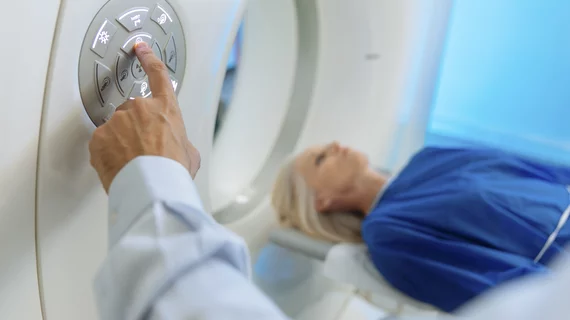Gadolinium-enhanced MRI helps diagnose painful shoulder condition
Gadolinium-enhanced MRI can help radiologists provide a more accurate diagnosis for patients with a painful shoulder condition.
Polymyalgia rheumatica (PMR) is a musculoskeletal disorder that causes aching and stiffness in the upper arms, neck, lower back and thighs; it can be difficult for clinicians to confidently pinpoint PMR since its symptoms occur in many other rheumatic diseases, Kazuro Kamada, MD, a rheumatologist at Tomakomai City Hospital in Japan, said in a statement.
“The diagnosis of PMR remains challenging. Bird’s classification criteria composed of the combination of clinical symptoms is highly sensitive to detect PMR but is low in specificity and requires careful diagnosis of exclusion,” Kamada, lead author of the study presented at last week’s American College of Rheumatology Annual Meeting in Atlanta, said in the statement.
“The (European League Against Rheumatism/American College of Rheumatology) EULAR/ACR Provisional Classification Criteria using ultrasound findings improved specificity, but the sensitivity was not enough. So, we need a new diagnostic tool with high specificity and sensitivity for PMR,” Kamada added.
The researchers identified three gadolinium-enhanced findings that, when used with MRI, improved physicians' ability to diagnose PMR compared to using such criteria with ultrasonography.
To do so, they included 175 patients with bilateral shoulder pain who met Bird classification criteria for PMR at Tomakomai City Hospital in their study. Of that group, 137 underwent both gadolinium-enhanced MRI and ultrasonography. Two rheumatologists diagnosed patients with PMR while radiologists analyzed their images.
Those diagnosed with PMR showed frequently enhanced joint capsules or rotator cuff tendons and focal bone edema in humerus heads. Using those findings on MRI, researchers diagnosed PMR with 76% sensitivity and 85% specificity. By comparison, using the criteria on ultrasonography yielded a 50% sensitivity and 72% specificity.
“Rheumatologists will diagnose PMR with confidence using gadolinium-enhanced MRI with high sensitivity and specificity, which will lead to decreasing misdiagnosis of PMR,” Kamada explained. “We are going to validate the results in a larger cohort next in order to optimize and standardize the gadolinium-enhanced MRI procedure for PMR to apply in real-world clinical practice.”

